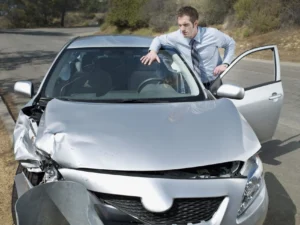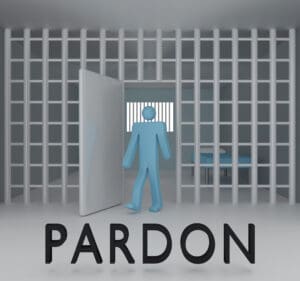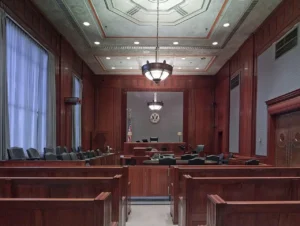Proving a wrongful death claim can be a complex and emotional process. It involves gathering substantial evidence to demonstrate that the death of a loved one was caused by the negligence or intentional actions of another party. A wrongful death lawyer is essential in navigating this legal terrain and ensuring that the necessary evidence is compiled effectively to build a strong case. This article delves into the types of evidence required and the legal intricacies involved in proving a wrongful death claim.
The Role of a Wrongful Death Lawyer
A wrongful death lawyer plays a crucial role in helping families seek justice and compensation after the loss of a loved one due to another’s negligence. These legal professionals specialize in handling wrongful death claims and have extensive experience in collecting the necessary evidence, negotiating with insurance companies, and representing clients in court. Their expertise ensures that the family can focus on healing while the lawyer handles the legal complexities.
Types of Evidence Needed in a Wrongful Death Claim
To prove a wrongful death claim, several types of evidence are required to establish liability and demonstrate the extent of damages. This evidence must show that the defendant’s actions directly caused the death and that the plaintiff has suffered significant losses as a result.
Medical Records and Autopsy Reports
Medical records and autopsy reports are fundamental pieces of evidence in a wrongful death claim. These documents provide a detailed account of the victim’s medical condition, the cause of death, and any pre-existing conditions that might have contributed. Autopsy reports are particularly critical as they offer a scientific analysis of the cause of death, which can be used to link the defendant’s actions to the fatality.
Witness Testimonies
Witness testimonies can significantly bolster a wrongful death claim. Eyewitnesses who were present at the scene can provide firsthand accounts of the events leading to the death. Their testimonies can help establish the sequence of events, the defendant’s behavior, and any negligent actions that occurred. Additionally, expert witnesses such as medical professionals or accident reconstruction specialists can provide professional opinions that support the claim.
Police Reports and Accident Reports
In cases involving accidents, police reports and accident reports are invaluable. These documents contain crucial information about the incident, including the date, time, location, and parties involved. Police reports often include observations from the responding officers, witness statements, and any citations issued, which can help establish fault and negligence.
Photographic and Video Evidence
Photographic and video evidence can provide compelling visual documentation of the scene and circumstances surrounding the death. This evidence can include photos of the accident scene, the victim’s injuries, or security camera footage capturing the incident. Such visual evidence can help paint a clear picture of what happened and support the claim of negligence.
Documentation of Financial Losses
To recover compensation for a wrongful death claim, it is essential to document the financial losses suffered by the plaintiff. This includes evidence of medical expenses, funeral costs, lost wages, and the loss of future earnings. Financial records, pay stubs, tax returns, and expert economic analyses can be used to quantify these losses and demonstrate the economic impact of the death on the family.
Establishing Liability in a Wrongful Death Claim
Establishing liability is a critical component of proving a wrongful death claim. This involves demonstrating that the defendant’s actions were negligent or intentional and directly caused the victim’s death. There are several legal aspects to consider when establishing liability.
Duty of Care
The first step in proving negligence is establishing that the defendant owed a duty of care to the victim. Duty of care refers to the legal obligation to act reasonably and avoid causing harm to others. In wrongful death claims, this could apply to drivers on the road, medical professionals, property owners, or manufacturers of defective products.
Breach of Duty
Once a duty of care is established, it must be shown that the defendant breached this duty. A breach of duty occurs when the defendant fails to act with the level of care that a reasonable person would in similar circumstances. This could involve reckless driving, medical malpractice, or failing to maintain safe premises.
Causation
Proving causation is crucial in a wrongful death claim. It must be demonstrated that the defendant’s breach of duty directly caused the victim’s death. This often requires a detailed analysis of the events leading up to the death and the relationship between the defendant’s actions and the fatal outcome.
Damages
Finally, the plaintiff must prove that they suffered damages as a result of the wrongful death. This includes both economic damages, such as medical bills and lost income, and non-economic damages, such as pain and suffering, loss of companionship, and emotional distress. Providing comprehensive documentation of these damages is essential for a successful claim.
Gathering and Preserving Evidence
Collecting and preserving evidence is a meticulous process that requires careful attention to detail. A wrongful death lawyer plays a vital role in this process, ensuring that all relevant evidence is gathered, preserved, and presented effectively.
Immediate Steps After the Incident
In the immediate aftermath of a wrongful death incident, it is crucial to take specific steps to preserve evidence. This includes taking photographs of the scene, collecting contact information from witnesses, and securing any available video footage. Promptly contacting a wrongful death lawyer can help ensure that these steps are taken correctly and that no critical evidence is lost.
Working with Experts
Wrongful death lawyers often work with a network of experts to gather and analyze evidence. These experts can include medical professionals, accident reconstruction specialists, forensic analysts, and economists. Their expertise is invaluable in providing detailed and credible evidence to support the claim.
Documenting the Investigation
Throughout the investigation, it is essential to maintain detailed records of all evidence collected. This includes keeping a log of witness statements, photographs, medical records, and any other relevant documentation. Thorough documentation helps build a strong case and ensures that all evidence is accounted for during legal proceedings.
Common Challenges in Proving a Wrongful Death Claim
Proving a wrongful death claim is not without its challenges. There are several common obstacles that plaintiffs and their lawyers may face during the process.
Disputes Over Liability
One of the most significant challenges in wrongful death claims is disputes over liability. Defendants and their insurance companies may contest the claim, arguing that the victim was partially or fully responsible for the incident. Overcoming these disputes requires robust evidence and skilled legal representation to establish the defendant’s negligence.
Lack of Witnesses
In some cases, there may be a lack of eyewitnesses to the incident, making it challenging to gather firsthand accounts of what happened. In such situations, the testimony of expert witnesses and the analysis of physical evidence become even more critical in proving the claim.
Delays in Legal Proceedings
Legal proceedings can be lengthy and complex, leading to delays in resolving the claim. These delays can be frustrating for grieving families seeking closure and compensation. Having a dedicated wrongful death lawyer who is committed to advancing the case efficiently can help mitigate these delays.
Emotional Impact on Families
The emotional impact of a wrongful death can be overwhelming for families. The stress and grief associated with losing a loved one can make it difficult to focus on the legal process. A compassionate wrongful death lawyer can provide the necessary support and guidance, allowing families to navigate the legal system while coping with their loss.
The Importance of Legal Representation
Having experienced legal representation is crucial in a wrongful death claim. A skilled wrongful death lawyer brings several benefits to the table, ensuring that the claim is handled professionally and effectively.
Expertise in Wrongful Death Law
Wrongful death lawyers specialize in the specific laws and regulations governing wrongful death claims. Their expertise allows them to navigate the legal complexities and develop a strategic approach to proving the claim. This specialized knowledge is invaluable in building a strong case and achieving a favorable outcome.
Negotiation Skills
Negotiating with insurance companies and opposing parties is a critical aspect of wrongful death claims. Experienced lawyers possess strong negotiation skills, allowing them to secure fair settlements for their clients. They understand the tactics used by insurance companies and can effectively counter their arguments to maximize compensation.
Courtroom Experience
While many wrongful death claims are settled out of court, some cases may proceed to trial. Having a lawyer with courtroom experience is essential in these situations. A seasoned wrongful death lawyer can present the evidence convincingly, cross-examine witnesses, and argue the case before a judge and jury.
Legal Precedents and Case Law
Legal precedents and case law play a significant role in wrongful death claims. Understanding how similar cases have been handled in the past can provide valuable insights and guidance for current claims.
Landmark Cases in Wrongful Death Law
There have been several landmark cases in wrongful death law that have shaped the legal landscape. These cases set important precedents regarding liability, damages, and the burden of proof. Analyzing these cases helps wrongful death lawyers develop effective strategies for their clients.
Utilizing Case Law to Support Claims
Wrongful death lawyers often reference relevant case law to support their arguments. Citing previous cases with similar circumstances can strengthen the claim and demonstrate how the law has been applied in comparable situations. This approach provides a solid legal foundation and enhances the credibility of the claim.
Compensation and Damages in Wrongful Death Claims
Compensation in wrongful death claims aims to provide financial relief to the surviving family members for their losses. Understanding the types of damages available and how they are calculated is essential for maximizing the claim.
Economic Damages
Economic damages refer to the quantifiable financial losses resulting from the wrongful death. These can include medical expenses, funeral costs, lost wages, and the loss of future earnings. Providing comprehensive documentation of these losses is crucial for a successful claim.
Non-Economic Damages
Non-economic damages address the intangible losses experienced by the family, such as pain and suffering, loss of companionship, and emotional distress. While these damages are more challenging to quantify, they are equally important in providing full compensation to the family.
Punitive Damages
In some cases, punitive damages may be awarded in addition to compensatory damages. Punitive damages are intended to punish the defendant for particularly egregious or reckless behavior and to deter similar conduct in the future. Proving eligibility for punitive damages requires demonstrating that the defendant’s actions were especially harmful or malicious.
Steps to Take After a Wrongful Death
If you believe you have a wrongful death claim, there are several critical steps to take to protect your rights and build a strong case.
Contacting a Wrongful Death Lawyer
The first step is to contact a wrongful death lawyer who can provide legal guidance and representation. Promptly seeking legal counsel ensures that important evidence is preserved and that the claim is filed within the statute of limitations.
Gathering Evidence
Collecting and preserving evidence is essential. This includes obtaining medical records, police reports, witness statements, and any other relevant documentation. A wrongful death lawyer can assist in gathering and organizing this evidence effectively.
Filing a Claim
Filing a wrongful death claim involves submitting the necessary legal documents to the appropriate court. The lawyer will handle the filing process, ensuring that all requirements are met and that the claim is properly presented.
Conclusion
Proving a wrongful death claim requires meticulous attention to detail and a comprehensive understanding of the legal process. By gathering the necessary evidence, establishing liability, and demonstrating the extent of damages, families can seek justice and compensation for their loss. A skilled wrongful death lawyer is indispensable in navigating these complexities and advocating for the rights of the bereaved family. Understanding the importance of each piece of evidence and the legal principles involved ensures that the claim is presented effectively, providing the best chance for a favorable outcome.





















